Eyelid Surgery
Eyelid Surgery
Eyelid surgery, or blepharoplasty, is one of the most commonly performed facial cosmetic procedures used to reduce bagginess from lower eyelids and remove excess skin from the upper eyelids. Whether you want to improve your appearance or are experiencing functional problems with your eyelids, eyelid surgery can rejuvenate the area surrounding your eyes. The procedure is often done along with other facial and skin rejuvenation procedures such as brow or forehead lifts, lasers or chemical skin resurfacing.
Why is Eyelid Surgery Performed?
As you get older your skin becomes less elastic and gravity pulls down on the skin and soft tissues of your eyelids. So an eyelid surgery is usually an effective way to improve sight in older people whose droopy eyelids get in the way of their vision. This surgery is also done for cosmetic reasons. For example, it improves the appearance of tired-looking eyes, droopy eyelids, or eyes with bags under them.
An eyelid surgery can enhance your appearance and help improve your confidence. However, it may not result in your ideal look or alter your facial structure. Before you decide to undergo surgery, think about your goals and discuss them with your surgeon.
What Happens during an Eyelid Surgery?
An eyelid surgery can be done under a local or general anesthesia. The surgery takes about 1 to 2 hours. It can involve the upper eyelids, lower eyelids, or both depending on the purpose of the surgery and recommendations of the surgeon.
To begin the upper eyelid surgery, the surgeon makes an incision in the natural crease of the upper eyelid. Then he/she removes the excess skin and protruding fat and close the wound using thin stitches.
In the lower eyelid surgery, the surgeon makes an incision just below the lash line. Through this incision, he/she removes excess skin in the lower eyelid. He/she may also use an incision hidden inside the lower eyelid called a transconjunctival approach, to correct lower eyelid conditions and redistribute or remove excess fat. This approach allows for access to the eyelid with no visible incision. Tightening the lower lids is recommended when the lower eyelids are lax in many middle-aged individuals.
How long is the Recovery time for an Eyelid Surgery?
Patients usually have a short recovery time after eyelid surgery. Bruising and swelling is normal the day after surgery but they quickly begin to disappear. Dry eyes, irritation at the incision sites, temporary sensitivity to light or wind, watery eyes and blurred vision are also included in initial healing. You can use cold compresses to reduce bruising and swelling around the eyes and face and apply lubricating ointment in addition to covering your eyes with gauze. The stitches can remain in the skin for about a week, but sometimes absorbable stitches are used that do not require removal. Most patients return to normal activities after seven to 10 days following eyelid surgery.
Will the Results of an Eyelid Surgery Be Permanent?
Results of an upper eyelid surgery can last at least five to seven years. Lower eyelid surgery rarely needs to be repeated. Of course, your eyes will still age after the procedure. If your eyelids sag again, a forehead lift rather than another eyelid surgery may be the preferred procedure.
Good Candidates for an Eyelid Surgery Include:
- Men and women who are physically healthy and psychologically stable.
- Individuals with a positive outlook and realistic expectations.
- Individuals without serious eye conditions, such as glaucoma, dry eye, or a detached retina.
- Nonsmokers
Pre-Operative Instructions for Eyelid Surgery
- Avoid aspirin, naproxen, and other anti-inflammatory medications, Vitamin E, herbal supplements or any medications containing these compounds for two weeks before surgery.
- Stop smoking two weeks before your surgery.
- Avoid sun damage two weeks before surgery.
- There should be no shaving or waxing of the area to be cut in the week leading up to the surgery.
- Having a bath or shower on the day of the surgery is a good idea.
- Do not eat or drink anything, including water, the morning of surgery.
- Do not wear any facial or eye make-up on the day of surgery.
- Avoid nail polish on the day of surgery.
- Do not wear jewelry on the day of surgery.
- Arrange for someone to take you home from the hospital.
Post-Operative Instructions for Eyelid Surgery
- Get plenty of rest.
- Keeping your head upright for a few days. Use pillows to raise your upper back to while you sleep.
- Use a cold compress which help decrease swelling, pain, and bruising.
- Do not use eye make-up until you are released to do so.
- Clean your eyes with plain water only.
- Do not drive until your vision is totally clear.
- Do not wear contact lenses for two weeks after surgery.
- Take your medicine as directed.
- Do not wait until the pain is severe before you take your medicine.
- Avoid bending down.
- Do not drink alcohol or make important decisions when taking pain medications.
- Do not smoke or be around a smoker.
- Avoid doing any heavy physical activity, including heavy lifting, or squatting.
- Absolutely avoid sun exposure, sun lamps, or tanning beds for six weeks after surgery.
What are the potential Risks and Complications of an Eyelid Surgery?
As with any surgical procedure, eyelid surgery carries some risks and complications, which include:
- Bleeding
- Infection
- Scarring
- Dry eyes
- Abnormal discoloration of the skin of the eyelids
- An inability to fully close the eyes
- abnormal eyelid position
- A pulled down lower lid lash line
- double vision, and possible loss of vision
- Damage from excessive sun exposure
- Muscle damage
See your Doctor immediately if:
- Your eye begins to bleed.
- You feel a sudden or sharp pain in your eye.
- The skin around your eyes is itchy or swollen.
- You lose your eyesight or your eyesight problem worsens.
- Your body temperature is high.
- You have a rash around your eyes.
- Your stitches come apart.
- You have discharge leaking from your eyes.

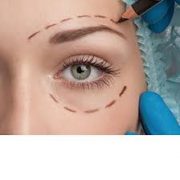
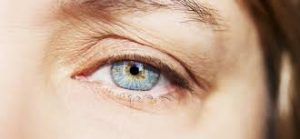
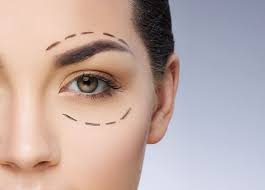
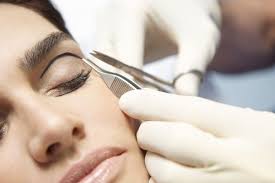
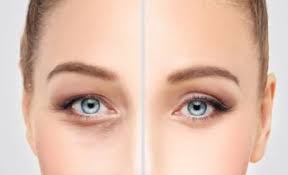


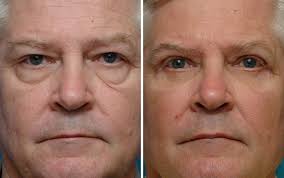


Leave a Reply
Want to join the discussion?Feel free to contribute!